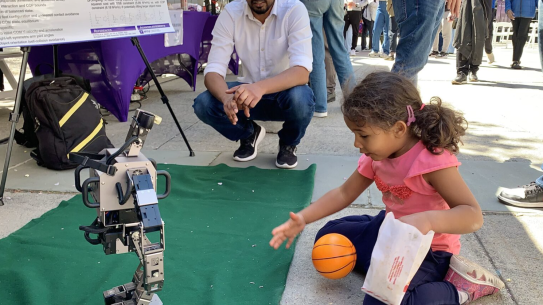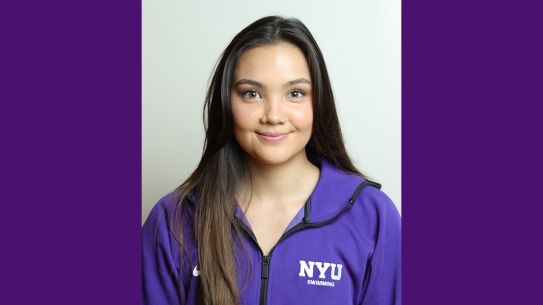Going Beyond 5G
NYU Tandon Helps Envision the Communications Networks of the Future
The International Telecommunication Union (ITU) dates all the way back to 1865, when an organization was formed to set standards for the then-fledgling commercial telegraph industry. The group has since played a formative role in the evolution of international telecommunications. In mid-2018, it announced the formation of Network 2030, a new subgroup of ITU’s Telecommunication Standardization Sector (ITU-T) chaired by Richard Li of Huawei. “Network 2030 is a pointer to the new horizon for the future digital society,” Li has said, and, accordingly, its members have their sights set firmly on the digital networks of the next decade and beyond.
Network 2030’s first meeting was hosted by the NYU Tandon School of Engineering in early October, with Vice Dean for Research, Innovation and Entrepreneurship Kurt Becker welcoming more than 100 industry and academic leaders from around the world to the event.
“It’s an honor to have you all here, sharing your visions and aspirations for the telecommunications networks of the future, and I believe NYU Tandon is an exceptionally fitting host given the school’s rich history in this area,” he said. “We once counted Samuel Morse as a faculty member, and communications and networks are now part of the focus of many of our research centers — including NYU WIRELESS, the Center for Advanced Technology in Telecommunications (CATT), the Center for Urban Science and Progress, and C2SMART (Connected Cities for Smart Mobility towards Accessible and Resilient Transportation).”
The event included discussions on broadband evolution, the smart cities of 2030, emerging applications and technologies — including holographic communications, industrial avatars, and high-precision communication demands in critical situations — and much more.
The group members’ work in the realm of standardization is vital since standards allow information and communication technologies (ICTs) to operate together and ensure that global ICT networks and devices are “speaking the same language.” Besides helping avoid onerous battles over preferred technology in the marketplace, implementing effective international ICT standards can level the playing field for companies from emerging markets; help developing countries build their infrastructure; and reduce costs for manufacturers, operators, and consumers alike.
Learn more from NYU Tandon Professor Shivendra Panwar, the director of CATT, and Associate Professor Yong Liu, who co-organized the landmark event.
Q: When did you become involved with Network 2030?
A: This was an inaugural meeting — and an exciting new initiative for all participants.
Q: Why 2030 specifically?
A: Before this, the ITU was looking at 2020, with a focus on fifth-generation (5G) mobile communications, but now we’re ready to look beyond 5G and get ready for what comes next.
Q: What is on the horizon for that year?
A: That’s not entirely clear, and that’s why it’s important for industry and academia to start thinking seriously about it. For the next year, we’ll be collecting ideas on use cases and requirements, services and technologies, and architectures and infrastructures for networks in 2030. We’ll give input to the ITU-T’s study group on future networks and share our information and vision with the public.
Q: What contributions is Tandon making as the industry gears up for 2030?
A: Professors Ted Rappaport and Sundeep Rangan from NYU WIRELESS have started looking at potential 6G technologies and Terahertz communications. Others are looking at edge computing and new architectures for wireless. We have also started considering the combination of robotics and high-bandwidth, low-latency communications and exploring new applications.
Q: What would a layperson think of as the most exciting or noteworthy takeaway from the event?
A: Participants are in an early, exploratory phase, and all sorts of new applications are being considered. One day, for example, full-motion, real-time holographic communications may become feasible.
Visit the ITU website for more information about the event.





